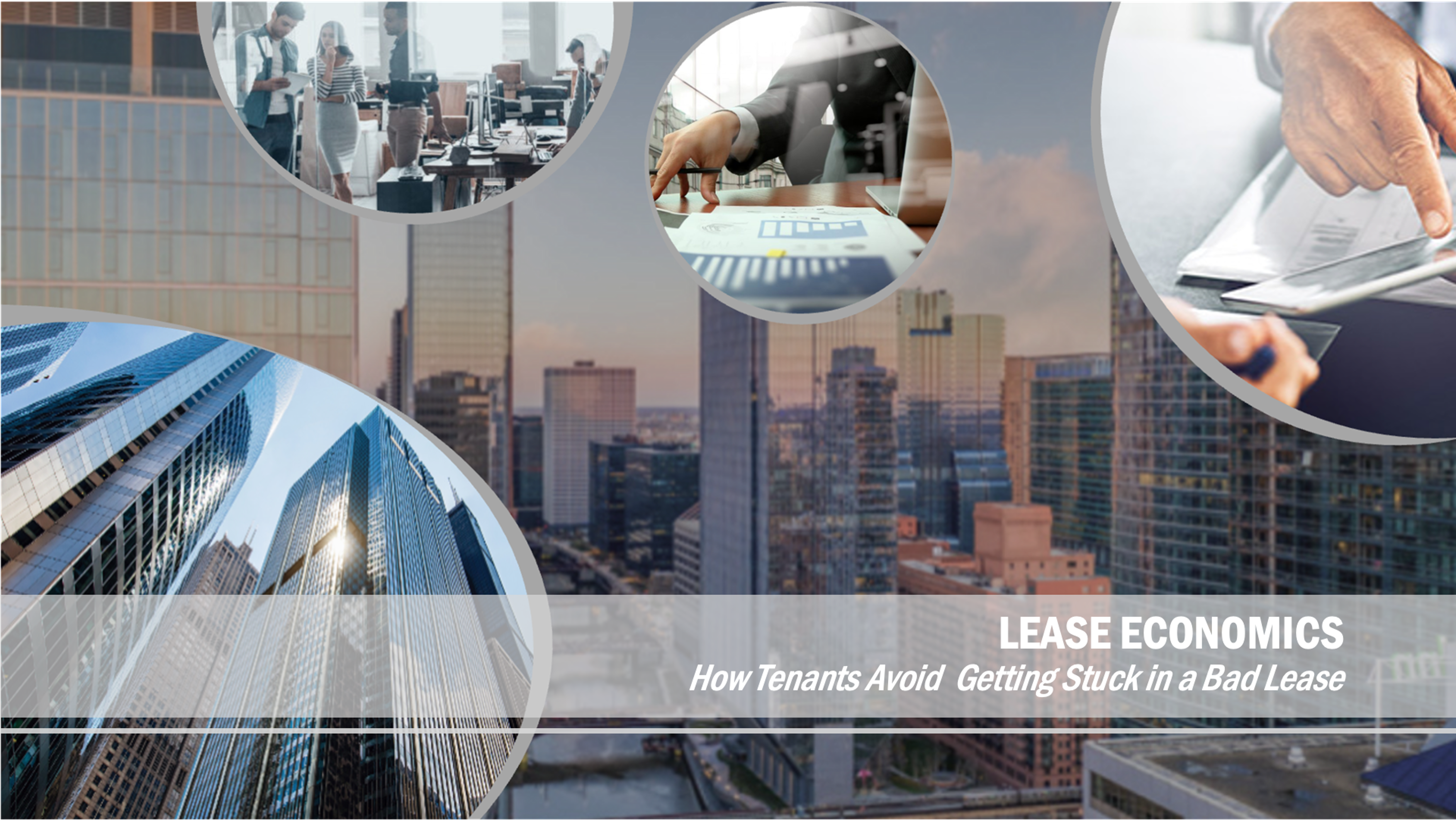Today’s Lease Economics — Major Opportunities for Tenants

The factors driving the office market evolution in nearly every major U.S. market and across every asset class have created tremendous opportunities for healthy tenants.
Of course, occupiers don’t need to be experts in Understanding Lease Negotiations, but proper representation and counsel is critical to take advantage of cost and saving opportunities in current and future leases.
Today, with the proliferation of institutional landlords negotiating mortgage debt with financial institutions, the focus remains on keeping building valuations as high as possible.
In fact, about US $930 billion (of almost $3 trillion) in commercial real estate loans held by banks will come due in the near term, and landlords and lenders will have to find compromises in order to restructure debt.
Consequently, landlords are adhering to lender covenants and restrictions, and currently are not significantly reducing rental rates. Instead, they are working to entice tenants with lease concessions and stronger incentive packages or tenant improvement allowances.
However, landlords may approach a transaction with a lengthy lease that lacks clarity or can govern every aspect of the tenant’s occupancy, setting the stage for economic and operational stress that could otherwise be avoided with upfront planning and prudent lease negotiations.
The following is a high-level guide for corporate tenants looking to take advantage of very favorable market conditions, avoiding the common pitfalls found in commercial leases.
Begin the Lease Process — Begin the planning process as soon as possible. CBIZ Gibraltar works with clients on space needs assessments to determine the type and amount of space they need. It’s important to consider not just how many employees will be coming in and how many executives need private offices, but also what types of collaboration, meeting and training spaces will meet business and employee needs. An effective tenant’s broker will also assist clients in understanding cost of the lease, and current market conditions (including typical tenant concessions), all of which can be invaluable tools against today’s formidable institutional landlord.
Understand the Economics — Depending on the asset class, commercial leases contain a myriad of economic terms (other than base rent) that have a substantial economic impact on the cost of occupancy. Tenants too often focus solely on the base rent and the term of the lease. However, to get a full picture of the economics of a lease, a tenant must analyze move-in costs as well as ongoing expenses.
Move-in costs include typical terms like the amount of the security deposit, lease guarantees, free rent, and tenant construction allowances. A well-informed tenant can structure a significant reduction in the move-in costs through concepts like the burning off of security deposits over time, and the application of the tenant improvement allowance towards things like moving expenses and furniture, fixtures and equipment. The long-term operating costs of a lease are much more nuanced (and potentially more economically significant).
Landlords, as a matter of policy, try to pass all costs of maintaining a building onto tenants (none of whom have any material control over the administration of these costs). This shift of costs from the landlord to the tenant is accomplished through a mind-numbing list of operating expenses.
Today, tenants may be able to exclude certain categories of expenses from this list and, more importantly, impose caps on certain controllable expenses (e.g., the management fees paid to landlord). Finally, a tenant should look specifically at lease compliance costs including tenant insurance, generating audited financials, after-hours HVAC and parking. Caps and limitations on most controllable lease costs and expenses can be negotiated with landlords, but tenants frequently acquiesce seemingly because these provisions are buried deep in the body of a lease.
Build in Flexibility — As a general rule, a landlord’s primary goal in commercial leasing is an uninterrupted stream of rental revenue for the duration of the lease term. However, tenants can negotiate certain provisions that mitigate the inflexibility of the landlord’s position, especially considering today’s market conditions.
The most obvious, and often the most expensive to a tenant, is a termination option. Perhaps more important, and more often utilized, is the ability to assign or sublet. Additionally, tenants can enhance the flexibility of a lease by securing valuable option rights in the form of expansion and extension options. Due to their long-term nature, any flexibility a tenant can secure enhances the overall value of the lease.
Don’t Ignore the Economic Terms — Every provision in a commercial lease is there for a reason. Unexpected issues arise in the ownership and operation of a commercial building including environmental conditions, compliance with laws, indemnities, casualty and condemnation. Every pro-landlord lease form will attempt to limit the tenant’s rights and remedies and will in fact endeavor to impose liability upon the tenant whenever possible. To be covered against these provisions, a tenant should engage a commercial leasing attorney to review and relax the pro-landlord provisions.
Real estate decisions cannot be made by simply analyzing proposals from prospective landlords — a fuller understanding of all long and short-term implications must be examined and considered.
As the leading provider of integrated real estate services with a 100% commitment to advocating the interests and needs of tenants, CBIZ Gibraltar understands that no two companies are alike and works to deliver the best possible solutions for our clients.
